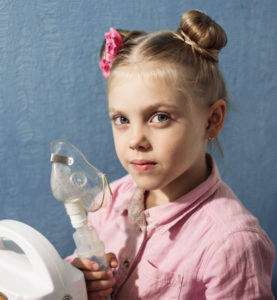Another Coal Plant Shuttered Due To Competition from Renewables, Natural Gas

The power plant will remain open a bit longer, as it has about 42 days of fuel stockpiled on site, but Navajo is following the same course as more than 100 coal plants have taken over recent years.
Ironically, the reduction in greenhouse gas emissions, as well as highly toxic heavy metals and radioactive isotopes has very little to do with the decision; were it not for the cost/benefit equation, Navajo would have continued to belch poison into our skies (and ultimately into our lungs and food supply) indefinitely.
Having said that, let’s not look a gift horse in the mouth. Regardless of the reason for the plant’s shuttering, it will save the same number of lives and prevent the same number of illnesses; the little girl shown above and her parents are fine on this either way.

Craig,
Not much of a victory. The closure of the Navajo Generating Station will leave a devastated Native American community, the loss of nearly 1000 jobs, cripple local business, close schools and hospitals and spread decay and hardship to an already hard pressed area of the US.
The Navajo Generating Station and Mine created more than 738 employees directly paying about $52 million per year in total wages.
Indirectly, the mine created another 2800 jobs. The mine contributed over $37 million to the Navajo Nation and $13 million to the Hopi tribe.
I’m sorry, but I find your smug sanctimony in poor taste.
Even worse are your lies. The Navajo Generating Station, although old, was an early example of just how efficient scrubbers and low coal particle technology could perform.
The Coal plant was fully compliant, and exceeded the ” Clean Air Act’ and even under Obama EPA considered the plant cleaner and less polluting than many newer natural Gas fired plants.
The National Ambient Air Quality Standards (NAAQS) established to protect public health reported the Plant consistently met or exceeded requirements since 2011
The EPA’s Air Quality Index (AQI), showing air quality on a daily basis, lists no unhealthy days for the general population in all of northern Arizona and southern Utah counties for the last 9 years.
A 2015 EPA report stated :
Nitrogen dioxide (NO2) levels in the Page area average about 3 ppb, 94 percent lower than the NAAQS standard of 53 ppb. Carbon monoxide (CO) levels have also been far below the standards.
Fine particulate (PM2.5) levels in the Grand Canyon region have been among the lowest in the nation since before NGS completed installation of SO2 scrubbers and low NOx-SOFA burners.
Annual mean levels for PM2.5 in the Page area are about 3 micrograms/cubic meter (µg/m3) – one quarter of the NAAQS standard of 12 µg/m3 and as low or lower than the cleanest U.S. cities listed by the World Health Organization.
Visibility in the Grand Canyon region has also been among the best in the nation since before NGS installed scrubbers and low NOx-SOFA burners.
Within Coconino County, visibility is generally better in the Page/ Glen Canyon area at the north end of the county than at the Grand Canyon and areas further south (Sunset Crater, Walnut Canyon, Wupatki National Monuments).
Visibility in the Page/ Glen Canyon area averages 3.5 deciviews above natural background conditions, within less than one deciview of the best visibility listed in the contiguous U.S. (The DV scale is near zero for a pristine atmosphere, with a change of one deciview being a just noticeable change.
In 2012, a fish consumption advisory was issued for striped bass in lower Lake Powell, raising concerns about mercury emissions from the plant.[45] NGS emissions, however, are found to contribute less than 0.2% of atmospheric deposition of mercury on the Colorado River watershed.
Atmospheric deposition, furthermore, accounts for only a part of the mercury loading, much of it coming from natural geological deposits. The natural weathering of rock in the Green River catchment, for example, alone contributes about 40% of the mercury loading in Lake Powell.
In 2013 the plant was further upgrade with new technology to met all Bart requirements.
Navajo Generating Station built the first zero liquid discharge system. The technology allows for recovery of all cooling tower blow-down and runoff .
Waste water is processed through three brine concentrators and a crystallizer, which remove the solids and produce distilled water for re-use within the plant. Several lined ponds are used in conjunction with the ZLD system to capture and regulate the flow of waste water to the system.
In addition the Navajo Generating Station sold about 500,000 tons of fly ash per year for use in the manufacture of concrete and Flexcrete insulating block building product.
This thriving business employing almost 80% Native American labour will also shut down, with no local industry replacement.
There were no “greenhouse gas emissions,or highly toxic heavy metals and radioactive isotopes”, these are just figments of your imagination, just as fiction as the little blond girl, who will no doubt enjoy her life in far away sanctimonious Santa Barbara, Cal.
She can grow up to attend college and be shocked by a future CNN TV show about the poverty and degradation of little Navajo and Hoti tribal girls and their communities.
Oh, but hey that’s okay, because America’s largest privately owned electrified railroad, “The Black Mesa and Lake Powell Railroad” will also now be uneconomic and all the rail road employees will be laid off.
Now that’s great news for the big Diesel truck dealers in Northern Arizona, who will sell big rigs to replace an electric train.
And what happens when the price of Natural Gas soars as a result of increasing demand from Asia and Europe?
Once again, the Native American gets screwed by smug, sanctimonious exploiters.
You should be ashamed, not gloating.